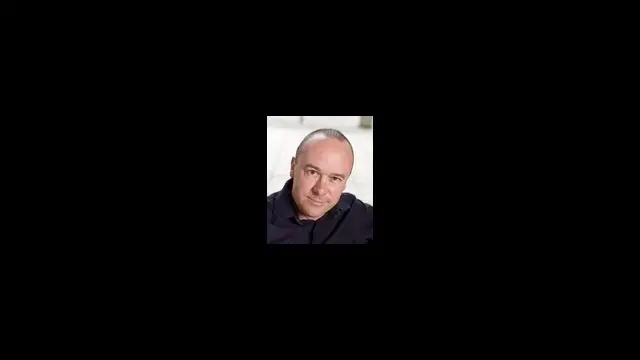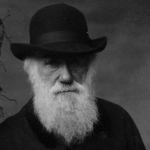Artificial Life

12 yıl
21.1K Görüntüleme
Kategori:
Açıklama:
Living organisms are extraordinary, with capabilities far exceeding any present-day technology. This talk will explore the quest to create artificial systems which exhibit some of those capabilities, and will thereby highlight the deep connections between two seemingly disparate disciplines: biology and computer science.
Alan Turing, who laid many of the foundations for computer science, was fascinated by the problem of pattern formation in natural systems, and proposed specific mechanisms which have only recently been vindicated experimentally.
One of the long-standing challenges in computer science is the creation of machines with human-like intelligence. Recent developments in the field of machine learning are starting to deliver rapid progress towards this goal.
The complex biochemical processes at work inside every living cell are sometimes likened to the operation of a silicon microprocessor. This analogy turns out to be profound: the computational capabilities of DNA and its associated molecular machinery are precisely the same as those of a modern digital computer. Our increasing ability to re-program living cells lies at the heart of the new field of synthetic biology, which offers the potential to transform medicine, energy generation, agriculture, and the environment. Already, prototype organisms have been engineered to synthesise diesel fuel, to detect toxic pollutants, and to manufacture anti-malarial drugs. Over the coming years, technological advances will allow cells to be programmed on an unprecedented scale, far exceeding our ability to design the software by hand. Insights and tools from the field of computer science will be essential in allowing the full potential of synthetic biology to be achieved.
Biography
Chris Bishop is a Distinguished Scientist at Microsoft Research, and a Fellow of Darwin College, Cambridge. He is also Vice President of the Royal Institution, and Professor of Computer Science at the University of Edinburgh. He is a Fellow of the British Computer Society, and a Fellow of the Royal Statistical Society, and has been awarded two Honorary Doctor of Science degrees. In 2004 he was elected Fellow of the Royal Academy of Engineering, and in 2007 he was elected Fellow of the Royal Society of Edinburgh.
He is the author of the leading textbook Neural Networks for Pattern Recognition (Oxford University Press, 1995) which has over 16,000 citations, and which helped to bring statistical concepts into the mainstream of the machine learning field. His latest textbook Pattern Recognition and Machine Learning (Springer, 2006) has over 5,000 citations, and has been widely adopted. His research interests include probabilistic approaches to machine learning, as well as their application in a broad range of scientific and technological domains.
In 2008 he gave the Royal Institution Christmas Lectures, broadcast on prime-time UK national television to an audience of close to 5 million. In 2009, he was awarded the Tam Dalyell Prize “for excellence in engaging the public with scienceâ€, and in 2011 he was awarded the prestigious Rooke Medal by the Royal Academy of Engineering, “for his persistent drive in engaging members of the public in the vital work of engineers and their contribution to societyâ€.
Alan Turing, who laid many of the foundations for computer science, was fascinated by the problem of pattern formation in natural systems, and proposed specific mechanisms which have only recently been vindicated experimentally.
One of the long-standing challenges in computer science is the creation of machines with human-like intelligence. Recent developments in the field of machine learning are starting to deliver rapid progress towards this goal.
The complex biochemical processes at work inside every living cell are sometimes likened to the operation of a silicon microprocessor. This analogy turns out to be profound: the computational capabilities of DNA and its associated molecular machinery are precisely the same as those of a modern digital computer. Our increasing ability to re-program living cells lies at the heart of the new field of synthetic biology, which offers the potential to transform medicine, energy generation, agriculture, and the environment. Already, prototype organisms have been engineered to synthesise diesel fuel, to detect toxic pollutants, and to manufacture anti-malarial drugs. Over the coming years, technological advances will allow cells to be programmed on an unprecedented scale, far exceeding our ability to design the software by hand. Insights and tools from the field of computer science will be essential in allowing the full potential of synthetic biology to be achieved.
Biography
Chris Bishop is a Distinguished Scientist at Microsoft Research, and a Fellow of Darwin College, Cambridge. He is also Vice President of the Royal Institution, and Professor of Computer Science at the University of Edinburgh. He is a Fellow of the British Computer Society, and a Fellow of the Royal Statistical Society, and has been awarded two Honorary Doctor of Science degrees. In 2004 he was elected Fellow of the Royal Academy of Engineering, and in 2007 he was elected Fellow of the Royal Society of Edinburgh.
He is the author of the leading textbook Neural Networks for Pattern Recognition (Oxford University Press, 1995) which has over 16,000 citations, and which helped to bring statistical concepts into the mainstream of the machine learning field. His latest textbook Pattern Recognition and Machine Learning (Springer, 2006) has over 5,000 citations, and has been widely adopted. His research interests include probabilistic approaches to machine learning, as well as their application in a broad range of scientific and technological domains.
In 2008 he gave the Royal Institution Christmas Lectures, broadcast on prime-time UK national television to an audience of close to 5 million. In 2009, he was awarded the Tam Dalyell Prize “for excellence in engaging the public with scienceâ€, and in 2011 he was awarded the prestigious Rooke Medal by the Royal Academy of Engineering, “for his persistent drive in engaging members of the public in the vital work of engineers and their contribution to societyâ€.


